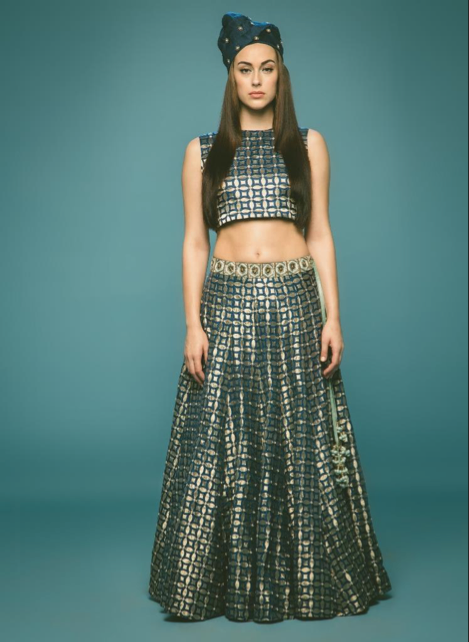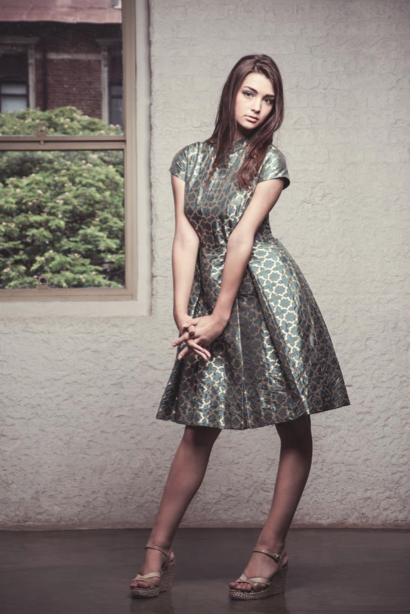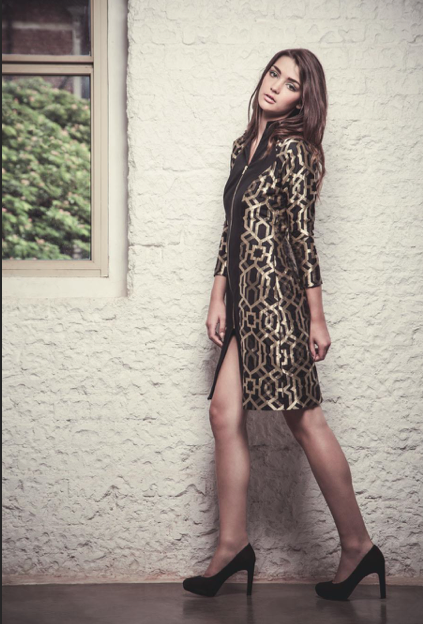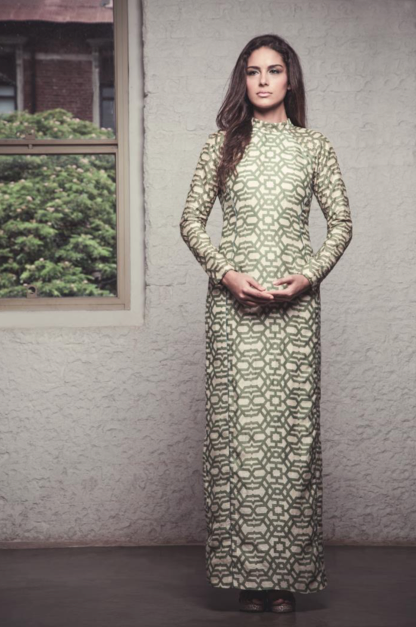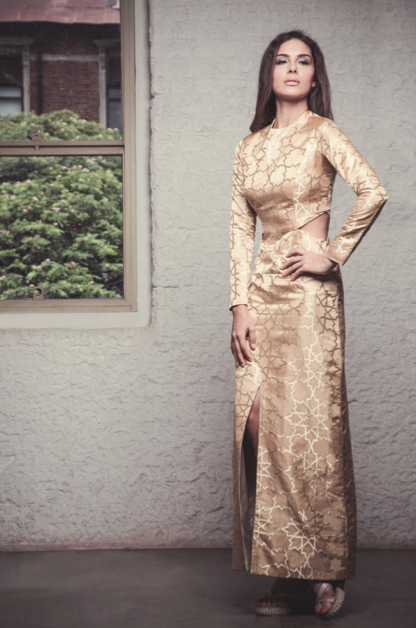There is a small but sure light of hope for the beleaguered handloom weavers of the famed Banaras silk in the form of designers who are coming back to them seeking inspiration.
In December last year when actress Anushka Sharma got married, the focus on her outfits and specifically the red Banarasi saree she wore for her reception was unmissable. Incidentally this saree took Muazzam Ansari and two other craftsmen two months of working day and night to create it. While Banarasi silks have been the muse of many designers, it is also being extensively contemporized to create garments that are more wearable and is also finding place in home décor and accessories.
Revival Tales
A number of steps are being taken in recent times by various stakeholders to revive handlooms in general and Banaras handlooms in particular. Large scale design intervention has been ongoing in the Banaras cluster over the past few years from many established as well as upcoming design houses. With mechanisation being in the limelight, the Government of India is initiating projects and providing incentives to weavers so as to prevent the art of handlooms from decaying. Fashion and product designers are revisiting their grass roots and are incorporating the art of traditional weaves into their collections. “They are developing contemporary weaves, motifs and innovative designs that are bringing this craft back to life and providing it with the recognition it deserves. This conscious effort of collaborating and building a mutually benefitting relation with weavers is being undertaken not only to revive the craft but also to give back and support the artisans and their families,” says Sonam, SVA by Sonam and Paras Modi. Kavya Chandra, Co-Founder, Soulful Hues adds, “Government support and the Make in India campaign have also added to popularizing this trend. And of course, social media with images of celebrities wearing saris and outfits made of these fabrics has done a lot to revive the use of handloom fabrics. Craft councils are also doing a lot by introducing weavers to buyers through exhibitions.”
Do the New
New ideation, collaboration and introduction of diverse ways of weaving technique, including introduction of natural ways to dye fabrics and incorporating fabric fusion is leading the change in these fabrics. Gaurang Shah, Designer explains. “what we consistently do to sustain this art of weaving in every region that is being practiced, is to introduce new design innovation, yarn fusion, new colour combination, skill upgrading and also helping weavers to find contemporary ways to remain deep rooted yet connect with originality.” Nikhat Mariyam Neerushaa, costume designer and stylist adds, “it is used in home décor in the form of curtains and cushions sarees and while lehenngas are famous Banarasi blazers are becoming popular.”
Contemporary Cues
A perfect way to keep a craft alive is to keep enriching its usage occasions and utility. Sarees continue to dominate, but the usage of Banaras fabrics in apparel and home furnishings can give it a much needed boost. Monica Shah of JADE says, “through our collections, we aim to shed more light on the weaving tradition of Varanasi and give it a place of pride in contemporary India as well as global fashion. The more it is seen within a contemporary framework and the more we demonstrate how beautifully Benarasi handloom can fit into special occasions as well as everyday life, the better we can ensure the continuity of its legacy as well as monetary profits for the communities who have devoted their lives to this craft. It is important for us to not only take care of our weavers, but also support their children so that they don’t feel compelled to give up on this age-old profession just for the lack of money.” Designer Shruti Sancheti adds, “these silks are made contemporary and relevant globally suitable not only for weddings or festivities but could be worn globally as a skirt, jacket or even a gown and used for furnishings and bags because of strong element of design and thought process being introduced.”
Wedding Vows
Banarasi silk is the optimum variant of silk material woven from the finest silk, crafted exclusively for the royal feel. It is an unmatched example of artistry, glorifying the décor. The intricate floral as well as the foliate design, with the special gold and silver brocade gives an antique, elegant feel giving the vintage meet the modern look to the décor of wedding. “The innovative utilization of Banarasi silk in the decorations has strongly embellished the décor and helps to revive the art. The geometric patterns and the rich and vibrant colors suits perfectly with the joyous moments and the wedding celebrations,” says Rachana Lucknowala, MD, Vivaah & Party Cruisers. With clients constantly looking for innovations and a spark of uniqueness to age old craft traditions, designers are also experimenting with combinations. “Combining Paithani with Banarasi in Meenakari collections is an example. The Inlay Work in India practiced majorly in Agra and Rajasthan forms the soul inspiration of the collection. This decorative and intricate craft will find life in intricate and geometric amalgamation of colourful patterns to form beautiful ensembles for this wedding season. What is exciting is the way it is applied in different hues to form striking statements through each garment,” says Naina Jain, a pioneer in the art of Bandhani in Benarasi Silk. Indian brides have for generations favoured the regal Benarasi for their wedding look. “With the celebrity following market trend in India and more people slowly shifting towards a more organic side of weaving, karigari with handloom have touched the taste of the modern woman,” says Soma Banerjee, Founder, Ur Style File.
Challenges Galore
Developing of Banaras textiles is a labour intensive process and with the advent of power looms and other simplified manufacturing processes, there has been a decrease in demand for this craft. Through power looms not only is production cheaper and faster, but the product is also more affordable. “A pure silk handloom Banarasi will cost at least Rs. 10000 and a similar-looking sari made on the power loom often costs as little as Rs. 1500. This was the reason that led to declining of the Banaras handloom craft,” says Nishant Malhotra, Founder, Weaverstory.com. Moreover with manmade fabrics and textiles taking over the market, Banaras no longer receives the recognition and monetary support that it requires to prevent it from becoming an endangered craft. Manish Saksena, Consultant who re-engineers lifestyle adds, “the skill of the weavers is going down every passing year. There has been no effort on enhancement and improvisation of the new entrants. The older generation is diminishing and the younger generation is only learning the basics to meet its demand and not necessarily as a craft.” Apart from this, the lack of proper infrastructure and a suitable working environment for weavers has led to them to stray away and turn to other secure jobs. “It may be an unfashionable thing to say but the ‘revival’ of handlooms or any craft for that matter, can only be sustained if there is greater economic viability. This economic viability can only be ensured when every member of the supply chain and ecosystem is rewarded and becomes a beneficiary of its economic dividends. A designer or a manufacturer loses incentive to innovate once there a hundred imitations. Likewise, no craft can survive unless there is a popular acceptance and patronage,” explains K.Radharaman, Founder, CEO & Design Head, House of Angadi. While the steps are small they certainly seem to be in the right direction and the choice really is in your hands to make a difference.
This story first appeared in the July 2018 issue of Jet Wings Magazine here: Beneras
Pics courtesy: SVA by Sonam and Paras Modi

